Huck weaving: An old tradition makes a comeback
After a chance discovery, we found out that a lot of people know this craft and remember it fondly. Others - native Swedes among them - never heard of it, so we did a little research on why it's remained a well-kept secret among its admirers.
-
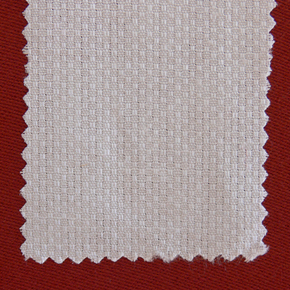 Huck linen is a rare find anymore. It was valued in the 18th and 19th century for its ability to absorb water, but modern technology and mass production of commercial products have replaced the need for handmade towels.
Huck linen is a rare find anymore. It was valued in the 18th and 19th century for its ability to absorb water, but modern technology and mass production of commercial products have replaced the need for handmade towels. -
-
The familiar proverb says, “A beloved child has many names.” Given that, it’s not a long shot to say that though it’s not widely known, huck weaving is a beloved craft. The Swedish fiber art technique has been known for generations by many names: Huck weaving or huckaback (rhymes with truck + track), huck stitching, huck darning and huck embroidery.
-
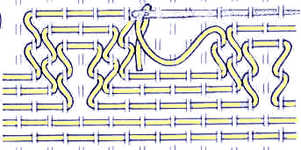 This pattern shows how the huck weaving needle doesn't pierce the fabric as it does in other needlework. Image artsanddesigns.com
This pattern shows how the huck weaving needle doesn't pierce the fabric as it does in other needlework. Image artsanddesigns.com -
-
But west coast fiber expert and teacher, Cindy Bentson, says calling it embroidery is a misnomer. “Embroidery involves a needle with its floss piercing a fabric; huck weaving weaves the floss across the top of the fabric rather than through it. The same comment applies to huck darning, in my mind.”
-
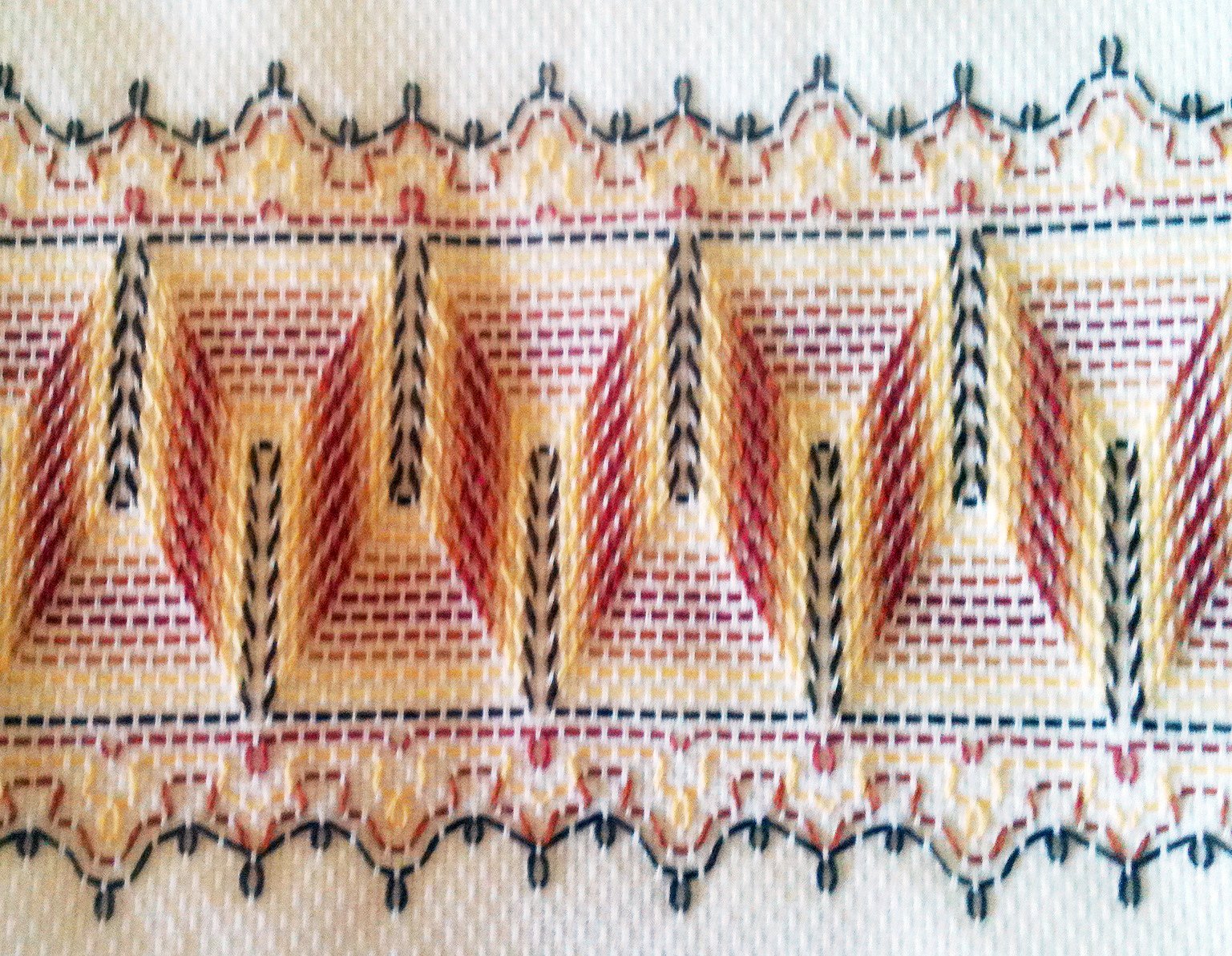 Various colors and stitches of Swedish huck weaving.
Various colors and stitches of Swedish huck weaving. -
This special kind of weaving is attributed to Sweden, but huckaback actually has roots in many traditions. Bentson has done a lot of research on its origins and admits: “Those who study ethnic needlework and other handcrafts have found no specific link between this technique and Sweden except that a lot of clothing, accessories and linens that survived the centuries came from Sweden.”
-
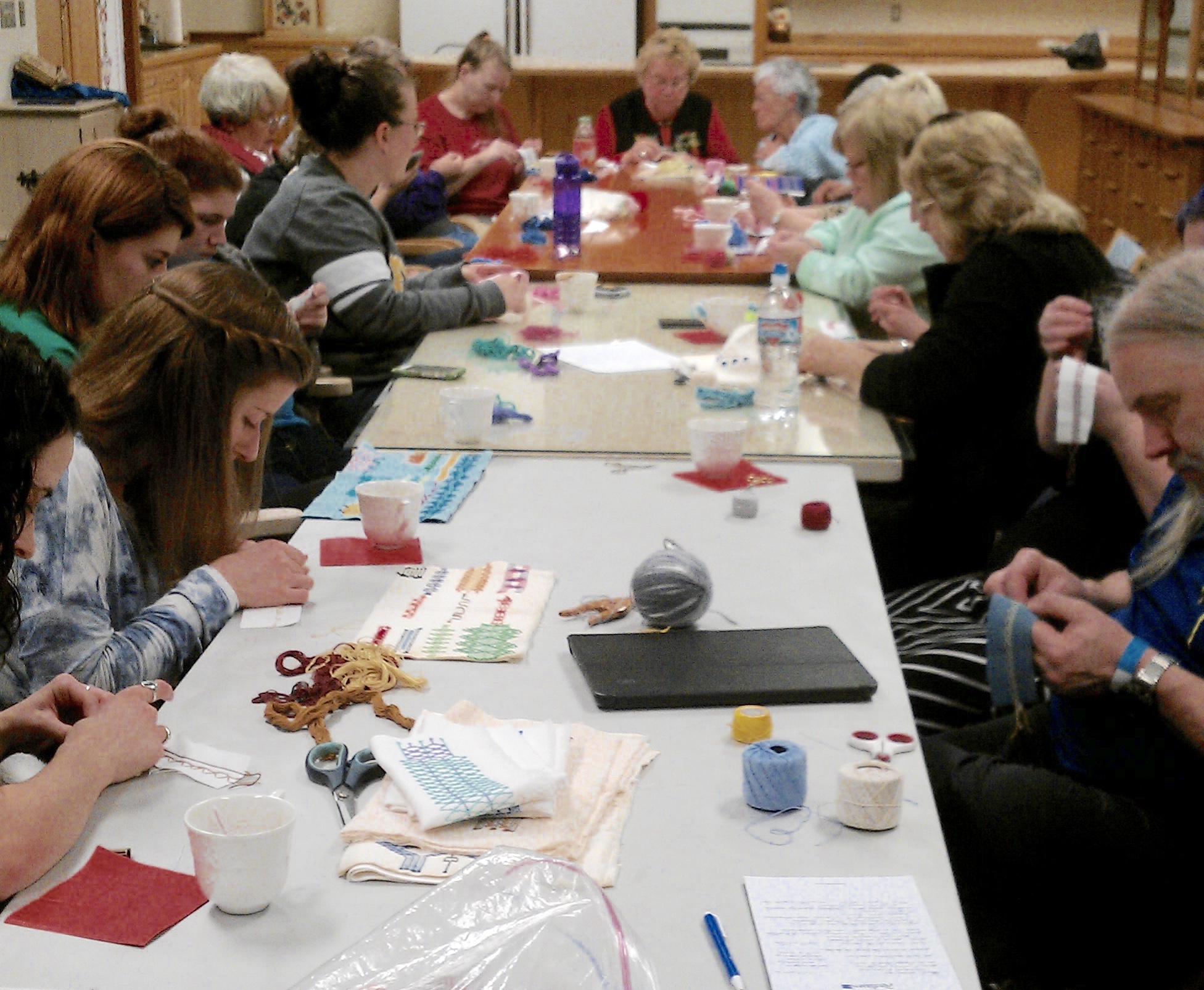 All ages get serious about what they're doing in a Swedish huck weaving class.
All ages get serious about what they're doing in a Swedish huck weaving class. -
This very beautiful handcraft technique could have very well originated in Sweden, or maybe Swedes simply preserved their examples better than other ethnic groups, but it’s unknown. Some antique examples date back to the 1600s. And then the craft came to the U.S. with the immigrants, developing into a thrifty, decorative and popular technique for making pleasing dishtowels in the 1930s, 1940s and 1950s, Bentson says.
-
 Cindy Bentson (at right) leads a class in huck weaving.
Cindy Bentson (at right) leads a class in huck weaving. -
Bentson herself grew up making handcrafts. Her mother taught her Swedish weaving while she was still just a little girl. Her mother wasn’t Swedish, neither of Bentson’s parents were — she has Finnish, Norwegian and English roots (and later married a Norwegian-Swede) — but she “got caught up in cross stitch, embroidery, knitting, macrame, and quilling, and lost touch with (Swedish weaving).” When her mother died four years ago, Bentson inherited a large collection of fiber items. Among them, she found her Swedish weaving and thought, “I remember that!” and with her pieces and a couple of old pattern books, she retaught herself.
-
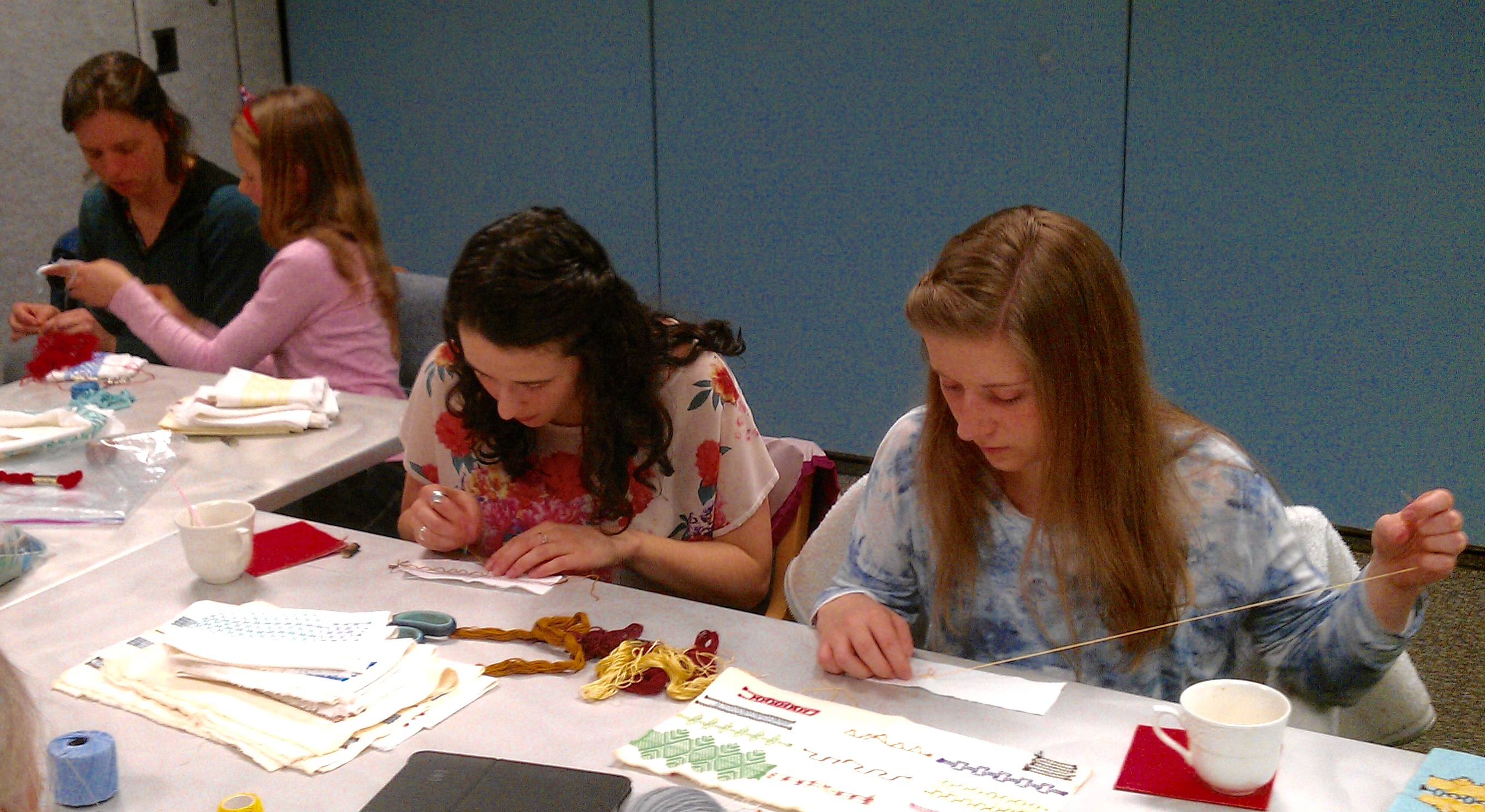 Teenagers are having fun as they made bookmarks in the Swedish huck weaving tradition.
Teenagers are having fun as they made bookmarks in the Swedish huck weaving tradition. -
She re-discovered that it can look very complex and complicated (and some patterns can be), but it really isn't. This sets it apart from more involved weaving processes. There is, for example, another technique actually called “Swedish Weaving,” but it requires the use of a loom and is not needlework.
-
 A beautiful example of huckaback.
A beautiful example of huckaback. -
Perhaps the most difficult part of huck weaving is finding the fabric. Huck fabric or toweling used to be available in the fabric departments of American stores like JCPenney and Sears, but it’s much less common now, available online at www.nordicneedle.com, for example. Today the use of Monk’s cloth is an option — it’s an even-weave fabric often used for blankets and throws. One can also use other even-weave fabrics such as waffle weave or Aida but they are difficult to stitch, Bentson warns.
-
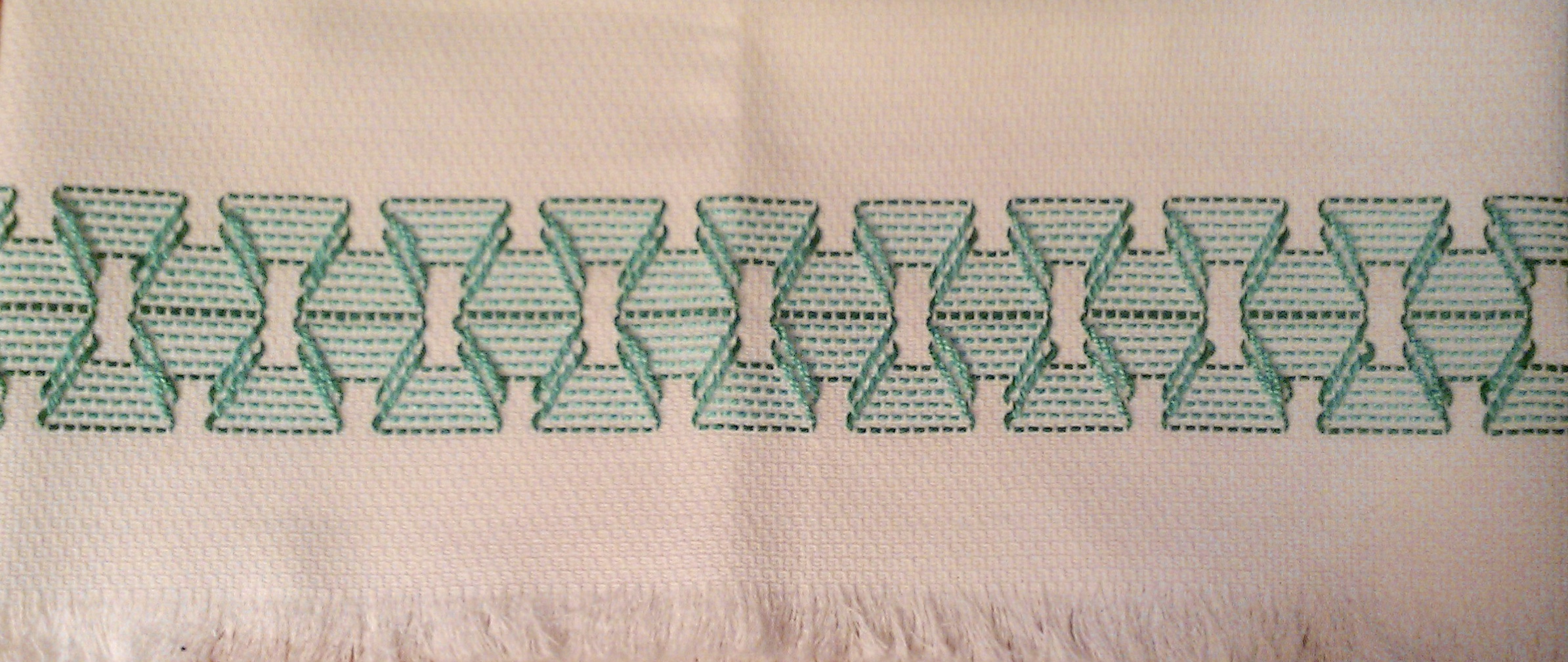 Detail of a hand towel made in the 1940s. From Bentson's personal collection.
Detail of a hand towel made in the 1940s. From Bentson's personal collection. -
Recently, Bentson ran a two-hour class at the Scandinavian Cultural Center at Pacific Lutheran University in Tacoma, WA. It was hosted by her local Daughters of Norway lodge, in which most members are Norwegian, but a large number are also Swedish, Danish or Finnish.
-
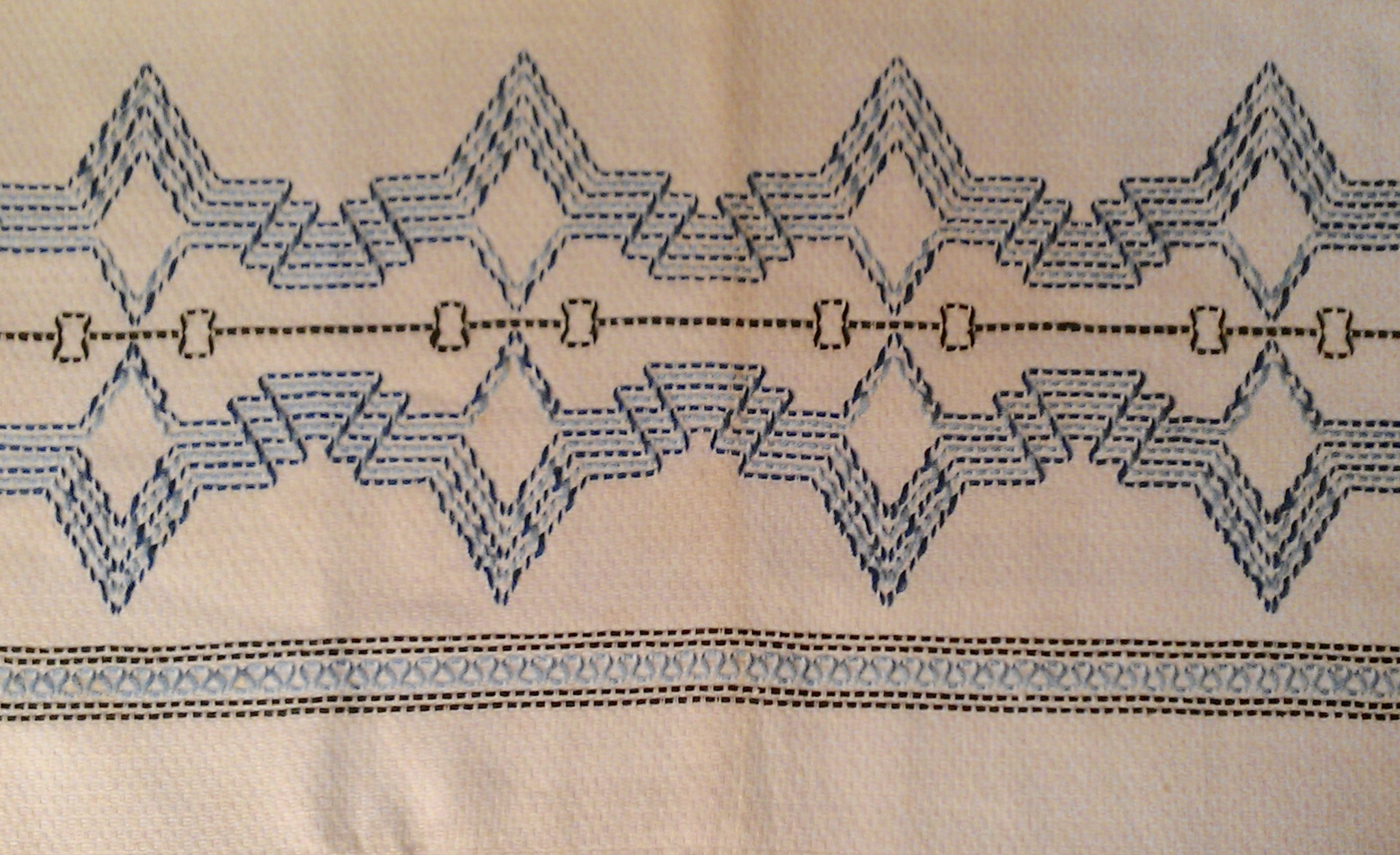 Detail of a hand towel from Bentson's mother's personal collection.
Detail of a hand towel from Bentson's mother's personal collection. -
Thirty people showed up for the class, including three men. The youngest was 10 years old and the oldest in her 80s. Only one of the students had done Swedish weaving before, and most had experience with other needlework, but five of them had no needlework experience at all. Everyone made a bookmark to take home with them.
-
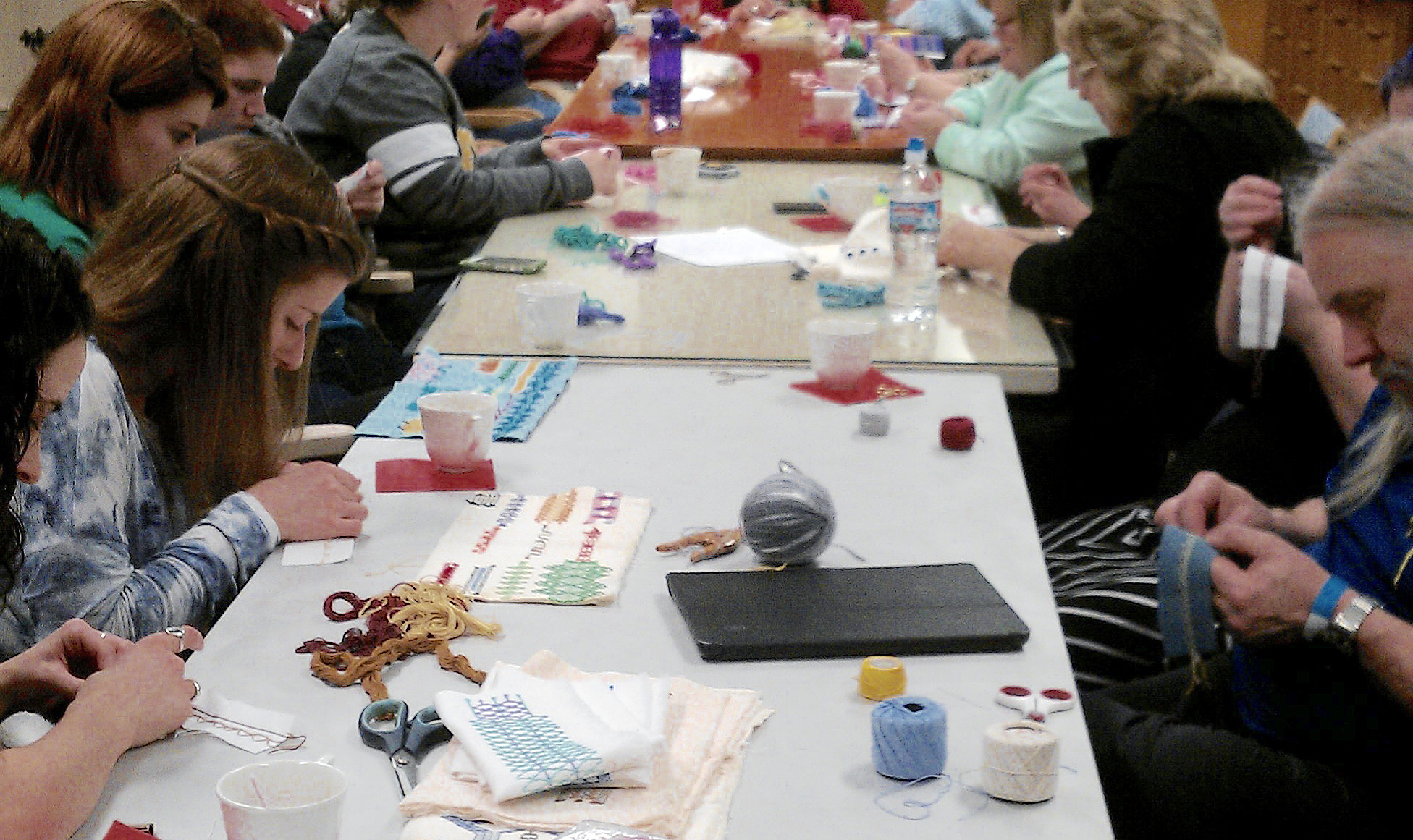
-
It was the first time Bentson had taught huck weaving in a class setting. She hoped to share her interest and passion for the beautiful handcraft which she loves for how relaxing, methodical and creative it is, all at the same time. And the choices of fiber colors is nearly unlimited.
-
Maybe it will make a comeback.
-
Do you have any memories or examples of huck weaving? Please share your story or digital photos by sending them to editor@nordstjernan.com
-
-
